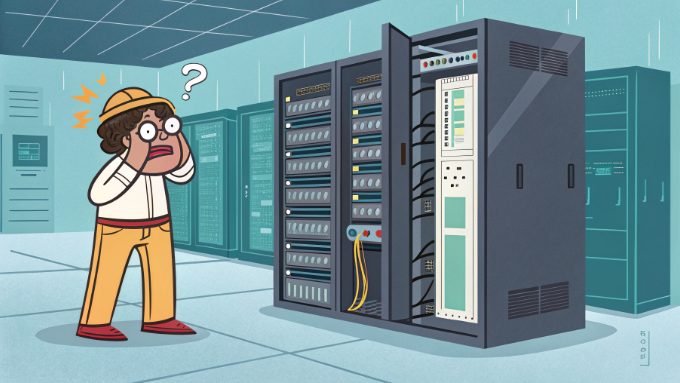Server Fails to Recognize Dedicated GPU: Causes & Solutions

Enterprise server administrators often encounter a perplexing challenge: high-performance GPUs failing to be recognized by their systems. This technical deep-dive explores the root causes and provides advanced solutions for GPU recognition issues in server environments, particularly relevant for those managing data centers and high-performance computing clusters.
Understanding the Core Issues
In the realm of enterprise computing, GPU recognition failures can manifest through various symptoms. System logs might show PCIe initialization errors, or the GPU might appear as a basic display adapter. The complexity increases when dealing with specialized workloads like AI training or rendering farms, where GPU functionality is mission-critical.
BIOS Configuration Deep Dive
BIOS misconfiguration ranks among the primary culprits of the issues. Modern server BIOS interfaces contain numerous settings affecting PCIe device initialization. Key areas to investigate include:
- PCIe slot configuration and Gen settings
- Primary display adapter selection
- Above 4G decoding options
- GPU pass-through settings for virtualization
Enterprise administrators should particularly focus on PCIe bifurcation settings when dealing with multi-GPU configurations. Incorrect bifurcation can prevent proper GPU initialization, especially in systems utilizing PCIe switches or risers.
Hardware Compatibility Analysis
Power delivery and thermal constraints often create subtle incompatibilities that standard diagnostics might miss. When troubleshooting GPU recognition issues, consider these technical aspects:
- PSU wattage calculation: GPU peak power draw + system baseline consumption
- PCIe lane distribution across multiple cards
- Thermal headroom in rack-mounted configurations
- Physical PCIe slot limitations and bandwidth allocation
Enterprise-grade GPUs like NVIDIA’s A100 or AMD’s MI250 often require specific power delivery configurations. A common oversight involves inadequate PCIe power cable gauge or improper power phase distribution.
Driver Stack Investigation
Modern server environments demand a precise driver stack configuration. Here’s a systematic approach to driver-related issues:
# Check GPU driver status lspci -vnn | grep VGA nvidia-smi dmesg | grep -i nvidia # Verify kernel module loading lsmod | grep nvidia modprobe nvidia
For enterprise Linux distributions, kernel module signing and secure boot configurations can interfere with GPU driver initialization. System administrators should verify:
- Kernel module compatibility with running kernel version
- DKMS configuration for automatic driver rebuilds
- SELinux or AppArmor profiles affecting driver operation
Advanced Troubleshooting Techniques
Enterprise environments require sophisticated debugging approaches. Here’s a technical workflow for systematic problem isolation:
- PCIe link training analysis using PCIe analyzer tools
- Power sequence timing verification during boot
- IOMMU group mapping verification for virtualized environments
- BMC log analysis for pre-boot initialization issues
Vendor-Specific Considerations
Different server manufacturers implement GPU support through unique architectures. Here’s a vendor-specific technical breakdown:
Dell PowerEdge Servers
iDRAC configuration plays a crucial role in GPU recognition. Specific attention points:
- System Profile Settings in iDRAC9
- PCIe slots power management configuration
- GPU mode selection (Compute vs. Graphics)
HPE ProLiant Series
ILO management interface requires specific configurations:
- Dynamic Power Capping technology settings
- UEFI Optimized Boot parameters
- GPU-specific ROM version verification
Performance Optimization Post-Recognition
Once GPU recognition is established, optimization becomes crucial. Key performance metrics to monitor:
| Metric | Target Range | Impact |
|---|---|---|
| PCIe Link Speed | Gen4 x16 | Direct bandwidth correlation |
| Power Draw | 80-95% TDP | Thermal equilibrium |
| Memory Clock | Maximum rated | Compute performance |
Enterprise Environment Integration
In colocation and hosting environments, its deployment requires additional considerations:
- Rack cooling capacity assessment
- Power distribution unit (PDU) load balancing
- Network fabric optimization for GPU-accelerated workloads
- Monitoring system integration for GPU metrics
Preventive Maintenance Protocol
Implementing a robust maintenance schedule prevents GPU recognition issues. Consider this technical maintenance framework:
Monthly Checks:
- Firmware version validation
- Temperature threshold monitoring
- Power consumption trending
- Error log analysis
Quarterly Tasks:
- BIOS/BMC updates evaluation
- Driver stack update assessment
- Physical inspection of PCIe connections
- Cooling system efficiency verification
Troubleshooting Decision Tree
For systematic problem resolution, follow this technical decision path:
- Initial Detection Phase
- BIOS POST behavior analysis
- Operating system enumeration check
- Hardware presence verification
- Deep Diagnostic Phase
- PCIe bus scanning
- Power delivery validation
- Thermal profile assessment
Future-Proofing Considerations
Enterprise server administrators should prepare for emerging GPU technologies. Key considerations include:
- PCIe Gen 5 compatibility requirements
- Liquid cooling infrastructure preparation
- Power density evolution in rack designs
- AI workload optimization capabilities
Conclusion
Successfully resolving server GPU recognition issues requires a comprehensive understanding of hardware interactions, software configurations, and enterprise-grade infrastructure requirements. By following this technical guide, server administrators can effectively diagnose and resolve GPU recognition problems while maintaining optimal performance in their hosting and colocation environments.
Additional Resources
- Server GPU compatibility matrices
- Enterprise driver repositories
- Vendor-specific technical documentation
- PCIe specification guidelines

